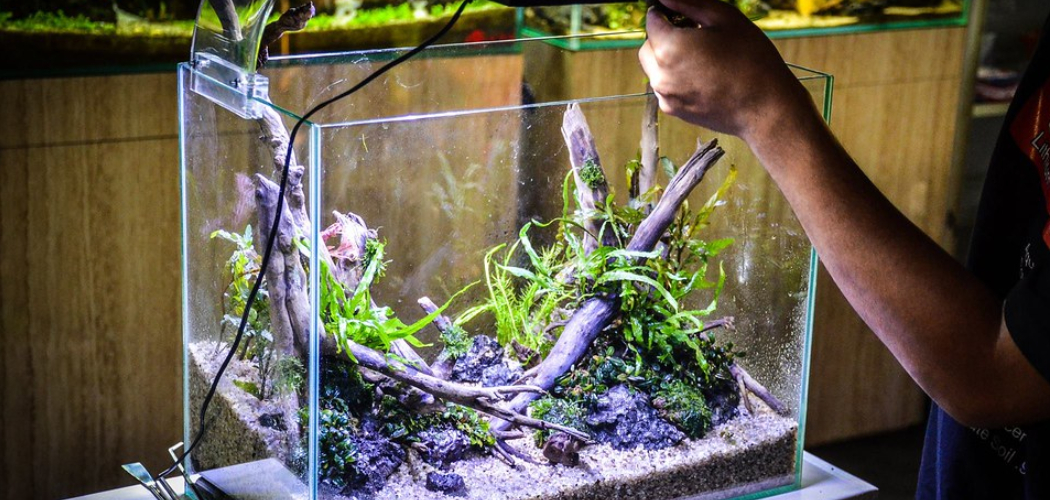Spider wood is popular for aquarium owners due to its unique appearance and texture. Not only does it add visual interest with its irregular shapes and patterns, but it also provides hiding spots for fish and other aquatic creatures. However, before adding spider wood to your aquarium, you must ensure that it is properly prepared.
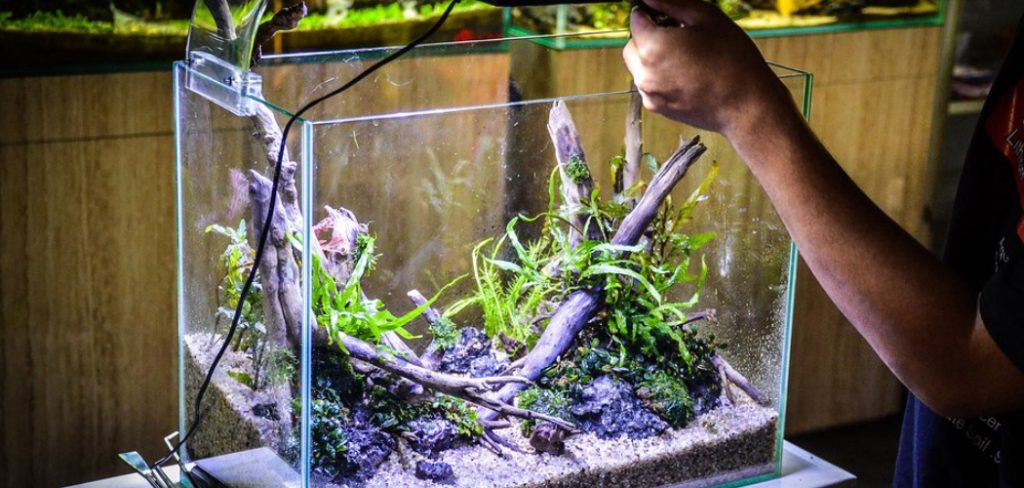
Spider wood is a popular decoration for aquariums. It adds natural beauty and gives fish places to hide, resulting in a more realistic environment. But before adding spider wood to the tank, it must be properly prepared to ensure that it is safe for your aquatic friends. Here are some of the advantages of preparing spider wood before using it in an aquarium. In this blog post, You will learn in detail how to prepare spider wood for aquarium.
Step-by-Step Processes for How to Prepare Spider Wood for Aquarium
Step 1: Inspect the Spider Wood
Before you can prepare the Spider Wood for your aquarium, it is important to inspect it and make sure that there are no sharp edges or pieces of debris in the wood which could harm your fish. Also, check for any signs of mold or rot on the wood, as these could also be hazardous.
Step 2: Soak the Spider Wood
Place the Spider Wood in a bucket or container filled with clean, dechlorinated water and leave it to soak for at least 24 hours. This soaking process will help remove any dirt, debris, and contaminants from the wood before you place it in your aquarium. After soaking, it’s important to boil the Spider Wood in a pot of dechlorinated water for at least 30 minutes. This boiling process will help kill any bacteria or parasites that may be present in the wood.
Step 3: Rinse and Sanitize the Spider Wood
After boiling, it’s important to rinse the wood thoroughly with clean, dechlorinated water. You can also sanitize it by soaking it in a bleach solution (1/2 cup bleach per gallon of water) for up to 10 minutes. Ensure you rinse the wood thoroughly after sanitizing, as any residual bleach could harm your fish.
Step 4: Scrub the Spider Wood
Once you have soaked and boiled the wood, use a stiff brush to scrub off any dirt or debris that is still left on the surface. If you are using bark-covered spider wood, remove as much of the bark as possible before placing it in your aquarium. The bark can release tannins into the water, staining it and affecting its pH levels.
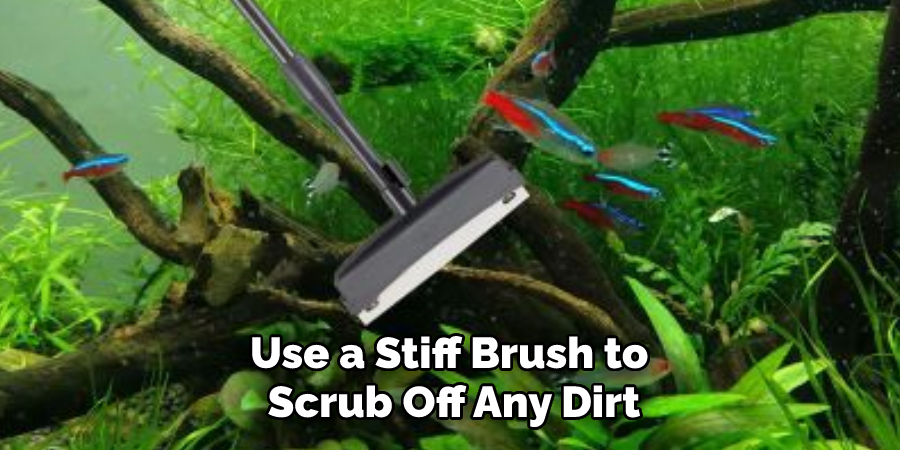
Step 5: Test the Spider Wood for Tannins
To ensure that your water won’t be stained or affected by tannins, you should test it before placing any spider wood in the aquarium. You can do this by adding a few drops of dechlorinated water to a small sample of the wood and testing it with a pH test strip. Once you have tested the spider wood, you can place it in a container filled with dechlorinated water and leave it to soak for at least 24 hours. This will help remove any residual tannins and other contaminants.
Step 6: Rinse the Spider Wood
Once you have soaked the wood, it’s important to rinse it thoroughly with clean, dechlorinated water. This will help remove any remaining dirt or debris from the surface. Once you have prepared the spider wood, it’s ready to be placed in your aquarium. Make sure you monitor the pH levels of your tank to ensure that the wood has not had any adverse effects on the water chemistry.
If necessary, add a de-chlorinator or other chemicals to restore balance if the pH levels become unbalanced. Additionally, when adding new wood to your tank, it is important to keep an eye on your fish for any signs of stress or illness. By following these steps, you will be able to safely and effectively prepare spider wood for your aquarium, ensuring that your fish stay healthy and happy.
Tips for How to Prepare Spider Wood for Aquarium
- When handling or cutting spider wood, it is important to wear gloves and safety glasses to protect your hands and eyes from any splinters or dust particles.
- Before adding the spider wood to your aquarium, make sure you thoroughly clean off any dirt or debris that could potentially harm your fish.
- Before adding the spider wood to your aquarium, soak it in dechlorinated water for at least 24 hours to remove any potential toxins or chemicals that may be present.
- Ensure all leaves and bark are removed from the spider wood to ensure your aquarium inhabitants’ safety.
- Boiling the spider wood for 15-20 minutes will help to remove any potential bacteria and parasites that may be present on the surface.
- Once you have boiled the spider wood, make sure you rinse it thoroughly to remove any traces of boiling water.
- Once your spider wood is ready, wait at least 24 hours before adding it to your aquarium system to give the wood time to adjust and balance out with the existing conditions in the tank.
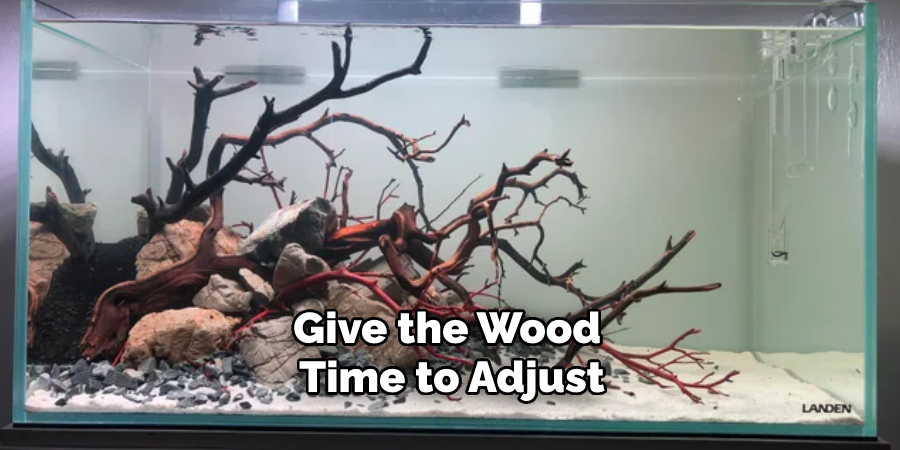
Following these steps for preparing spider wood for aquarium use will help ensure the safety of your fish and other aquatic inhabitants.
How Long Should You Keep the Spider Wood in an Aquarium Before Changing It Out?
When it comes to how long you should keep spider wood in an aquarium before changing it out, the answer will depend on a few factors. The first factor is the size of your tank, as larger tanks may allow for longer periods of time between changes. Additionally, if you have a high bio-load (number or amount of fish and other creatures living in the aquarium), it is recommended that you change out the spider wood more frequently as this will help to maintain better water quality.
Overall, it is generally best to change out your spider wood every six months or so, but if you have a smaller tank or a lower bio-load, you may be able to wait longer. However, it is important to keep an eye on your water parameters to ensure that the quality remains high and that any excess waste or debris from the wood does not build up in the tank. If you notice a decline in water quality, then you should replace the spider wood as soon as possible.
Are There Any Methods for Preserving or Maintaining the Spider Wood While in an Aquarium?
Yes, there are several methods to preserve and maintain the spider wood while it is in an aquarium. One of the most popular and effective methods is to treat the spider wood with a water conditioner before placing it in the tank. This will remove any harmful chemicals or impurities from the wood that could harm your fish.
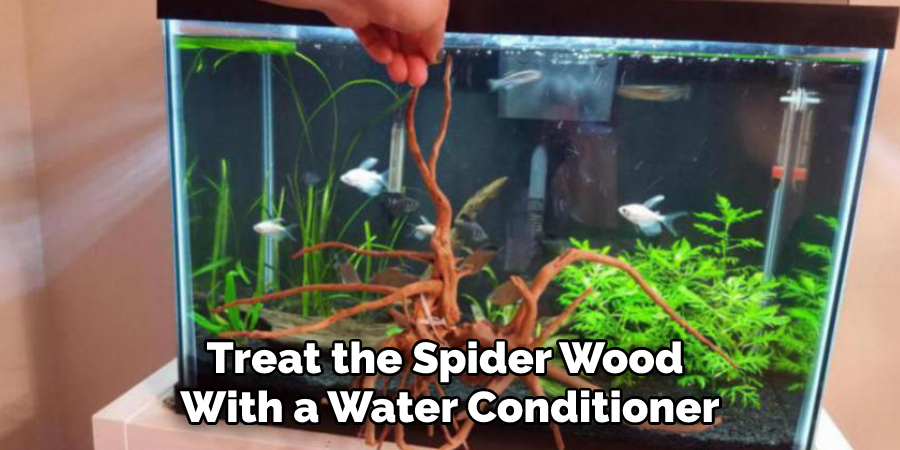
Additionally, aquarium sealant can seal any cracks or crevices in the spider wood that could harbor harmful bacteria. Lastly, it is important to regularly clean and inspect the spider wood for signs of decay or other damage. If you notice any discoloration, deterioration, or rotting on the wood, immediately remove it from the tank and replace it with a new piece.
Following these steps, you can help ensure that your spider wood is properly preserved and maintained in an aquarium. Ultimately, it is important to remember that spider wood should be treated with care in order to preserve its natural beauty and durability for years to come. Taking the time to prepare the wood for your aquarium properly will help ensure that your fish and other aquatic creatures have a safe, healthy environment to thrive in.
Are There Any Potential Risks Associated With Using Spider Wood in an Aquarium?
Spider wood is generally safe to use in aquariums, but there are some potential risks that should be taken into consideration. The first risk is the possibility of altering your tank’s water chemistry.
Spider wood can release tannins into the water and significantly lower its pH level, which could create an unbalanced environment for your fish and other tank inhabitants. Additionally, if the wood has not been properly cured or treated beforehand, it may contain contaminants that could be hazardous to your fish. It is best to research and purchase spider wood from a reputable source that can ensure it is free of contaminants.
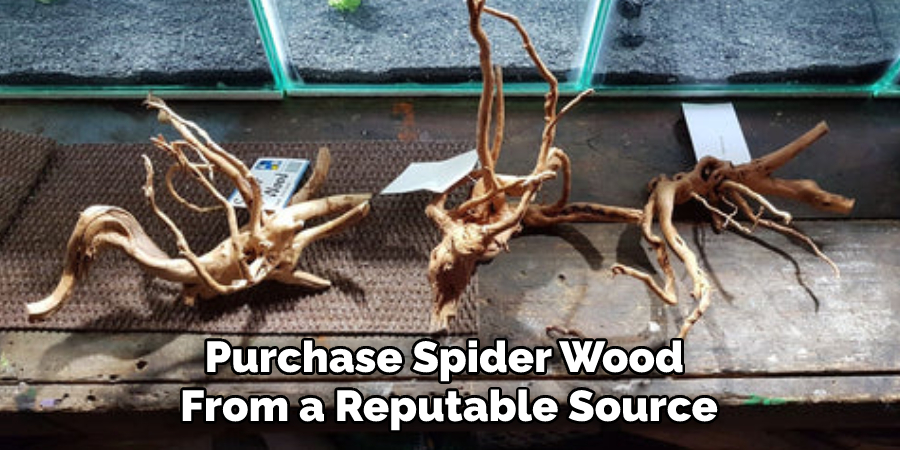
Another potential issue with using spider wood in an aquarium is its shape and texture. Spider wood is usually heavily twisted and branched, which can create areas in your tank that fish may be unable to swim through.
Additionally, its rough texture may pose a risk of injury to more delicate species. It is important to thoroughly inspect your spider wood before adding it to the aquarium, looking for any sharp edges or protruding branches that could potentially harm your fish.
Is There Any Other Advice You Recommend When Preparing and Using Spider Wood in an Aquarium?
When using Spider Wood for your aquarium, taking proper care of it is important. Here are a few tips and advice to ensure that your experience with the wood goes as smoothly as possible:
- Ensure the wood has been fully submerged in water for several weeks before adding it to your aquarium. This will help make sure that any potential contaminants, such as bacteria or parasites, have been removed before being added to the tank.
- Choose the right spider wood for your aquarium based on the size of your tank and its inhabitants. Smaller pieces are best suited for smaller tanks, while larger pieces may need to be broken down into smaller chunks before being them to the tank.
- Once you have added the wood to your aquarium, make sure to regularly monitor it for growth or change in color or shape. If any of these changes occur, remove the wood from the tank right away and dispose of it when adding Spider Wood to an existing aquarium, be sure that the water parameters are stable and that there are no signs of infection or disease. This is important to avoid any potential problems in the future.
- Change out the water regularly for your tank, particularly if it contains Spider Wood. The wood can release tannins into the water, which can cause a yellow-tinted color and make it more difficult to maintain a healthy environment.

By following these tips, you can ensure that your experience with Spider Wood is safe and successful. With proper care and maintenance, your aquarium will be beautiful and rewarding for years to come.
Conclusion
In conclusion, preparing Spider wood for an aquarium is not a difficult task. It only requires a few steps to ensure the wood is safe and suitable for your tank. Firstly, you should make sure to clean and sterilize the wood before adding it to your aquarium. This can be done by soaking it in hot water or boiling it, depending on the size of the wood.
Additionally, you should make sure the wood is free of parasites or other contaminants before adding it to the tank. Finally, the spider wood should be allowed to soak in water for several days before being added to the aquarium so that any excess tannins are released. I hope this article has been beneficial in learning how to prepare spider wood for aquarium. Make Sure the precautionary measures are followed chronologically.

